Manufacturers say that whether a department chooses to purchase a Type 1 or Type 3 ambulance depends on a number of factors, including the kind of terrain to be negotiated, the volume of runs the rig is likely to have, departmental preference, and other factors.
Greg DeForge, sales manager for Wheeled Coach, says that the lack of a diesel engine option for Type 3 chassis has caused a shift toward Type 1 rigs. “Also, many fleet maintenance people prefer to work on diesel engines instead of gasoline engines,” DeForge says, “especially in fire departments where every fire truck in the fleet is diesel powered, so their emergency medical service (EMS) rigs usually are too.”
The greater payload capacity of the Type 1 chassis also is an important element to be considered, DeForge observes. “Fire departments that run EMS have to carry a lot more gear on their ambulances, like turnout gear, self-contained breathing apparatus, thermal imaging cameras, and battery-powered rescue tools,” he says. “And with a Type 1, the department can go with an extended cab or a cab-and-a-half where they could run three people, instead of only two in a Type 3.”
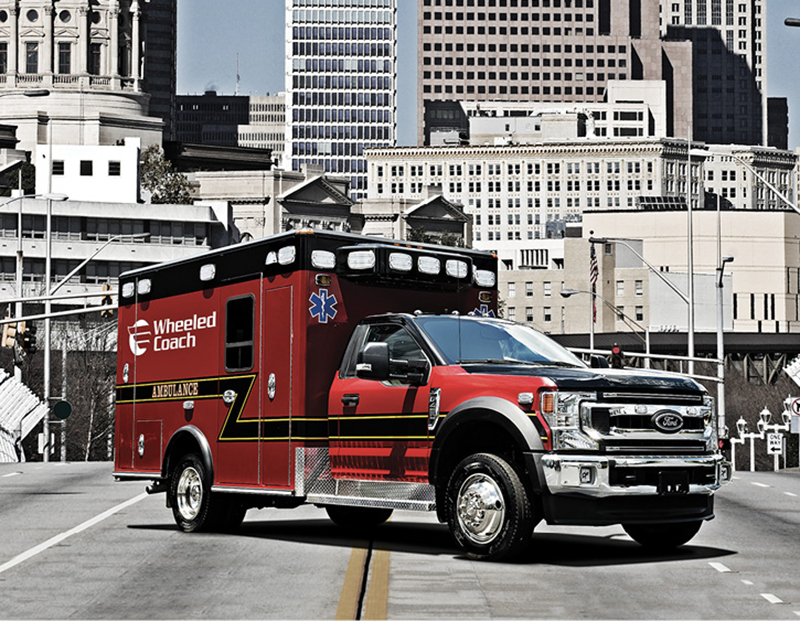
1 This Wheeled Coach Type 1 ambulance is built on a Ford F-550 chassis. (Photos 1-2 courtesy of Wheeled Coach.)
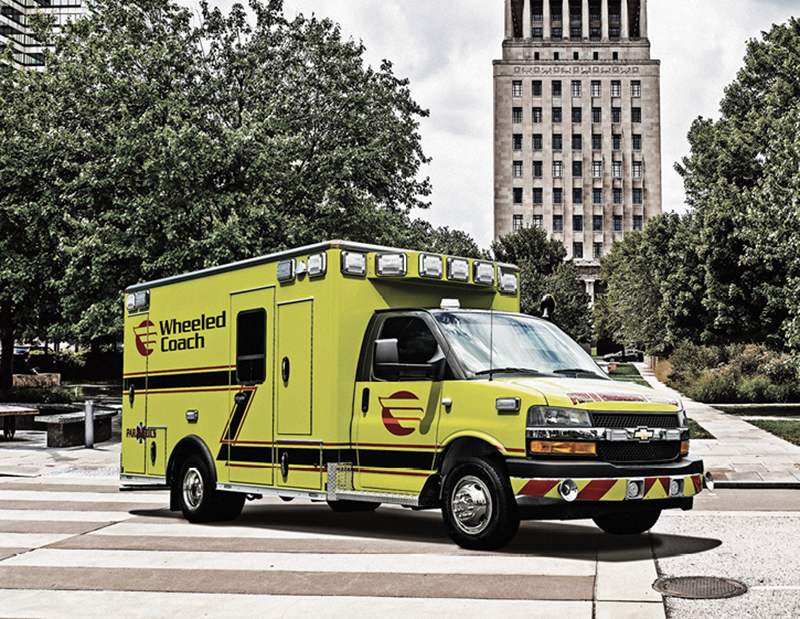
2 This Wheeled Coach Type 3 ambulance is built on a Chevy cutaway chassis.
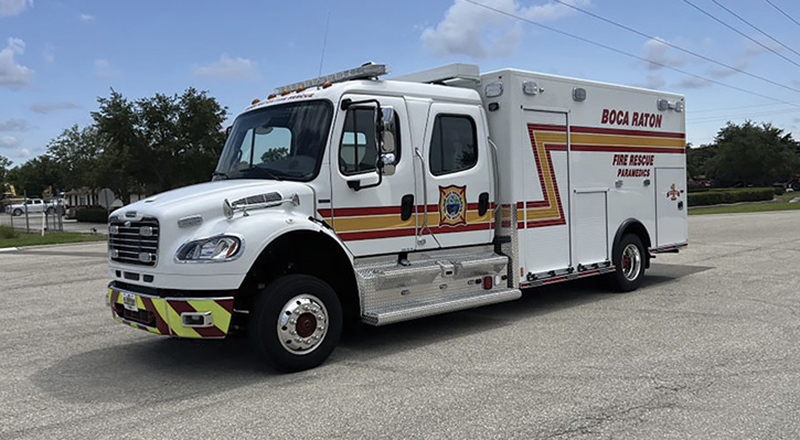
3 P.L. Custom built this Type 1 ambulance on a medium duty Freightliner chassis with a four-door cab for Boca Raton (FL) Fire Rescue. (Photos 3-4 courtesy of P.L. Custom Emergency Vehicles.)
Chad Newsome, national sales manager for P.L. Custom Body and Equipment Company Inc., observes that both Type 1 and Type 3 ambulances have a square or rectangular patient compartment mounted on their chassis, and the difference between them lies in the type of chassis. “A Type 1 ambulance is mounted onto a truck chassis with a cab layout similar to a pickup truck,” Newsome says. “So, a Type 1 would be on a Ford F-550, F-450, or F350 chassis or a RAM 4500 or 5500 chassis.” Newsome adds that Type 1 ambulances also can be built on medium duty chassis like those offered by International, Freightliner, and Peterbilt.
A Type 3 ambulance, Newsome points out, is mounted on a cutaway van chassis. “The cab is an integral part of the ambulance unit on a Type 3,” he says, “and while the connection between the cab and the patient module can vary in appearance, generally it looks more like a doorway than a window. Type 3 ambulances would be built on Ford E Series chassis; Chevy Express Cutaway chassis, which is gasoline powered only; or a RAM 3500 cutaway chassis, which doesn’t offer much payload.”
In between the two types is the Type 2 ambulance, Newsome notes, which is a van-style rig and can be built on a Ford Transit chassis, a Dodge RAM ProMaster chassis, or a Mercedes-Benz Sprinter chassis. “The choice of a type depends on the operational style of the user, the kind of terrain the rig is going to have to negotiate, and the configuration inside the patient module,” he says.
Paul Marshall, sales and marketing manager for Osage Ambulances, says that the domestic sales of ambulances in 2022, as reported by the Ambulance Manufacturer’s Division of the National Truck and Equipment Association, show a marked tendency for buyers to choose Type 1 ambulances. “There were 3,744 Type 1 ambulances sold last year,” Marshall says, “and 2,698 Type 3 sold for a total of 6,442 of both types. That’s a 60% to 40% margin for the Type 1.”
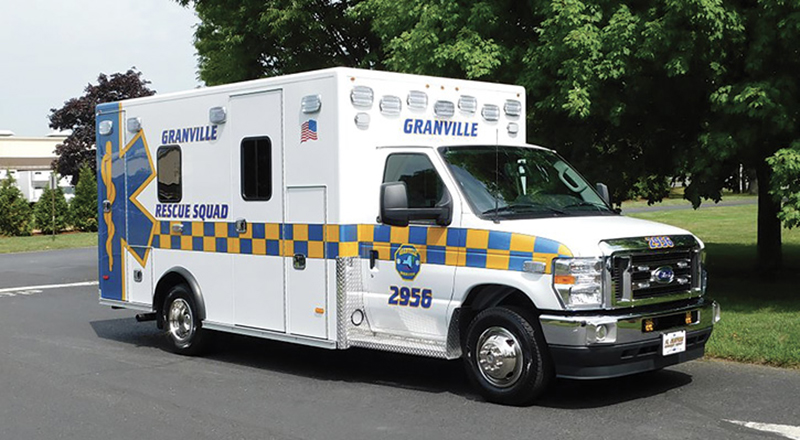
4 This P.L. Custom Medallion 170 Type 3 was built on a Ford E-450 chassis for Granville (NY) Rescue Squad.
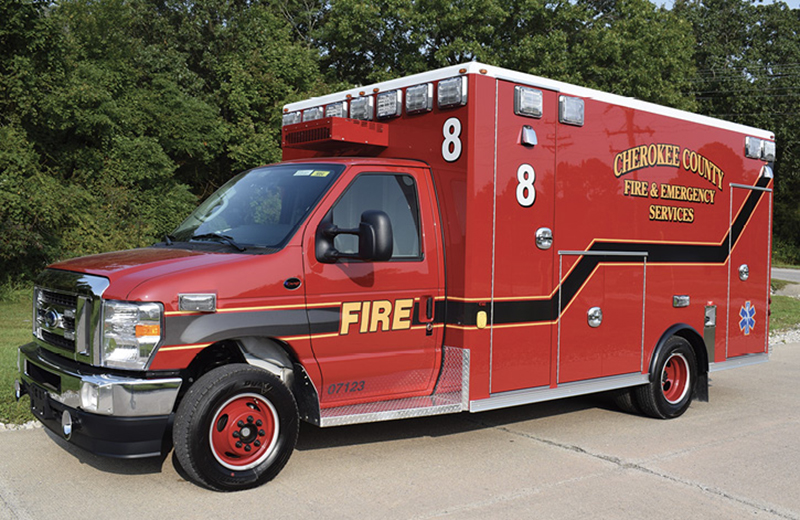
5 Cherokee County (GA) Fire & Emergency Services had Osage Ambulances build this Type 3 on a Ford E-450 chassis. (Photos 5-6 courtesy of Osage Ambulances.)
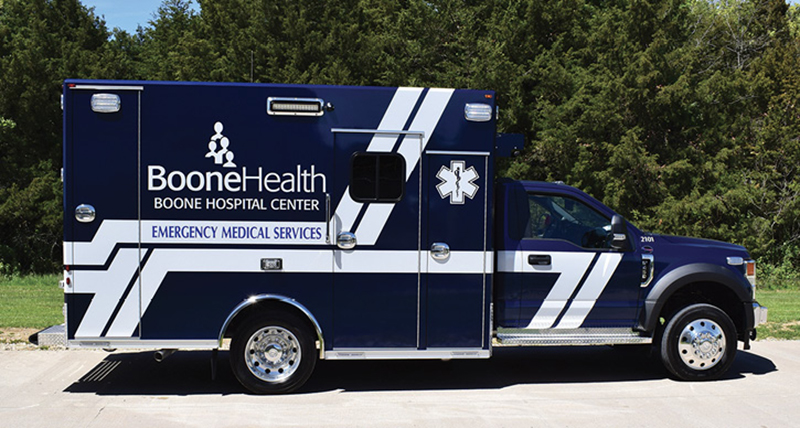
6 Osage built this Type 1 on a Ford F-550 chassis for Boone Health (MO) Emergency Medical Services.
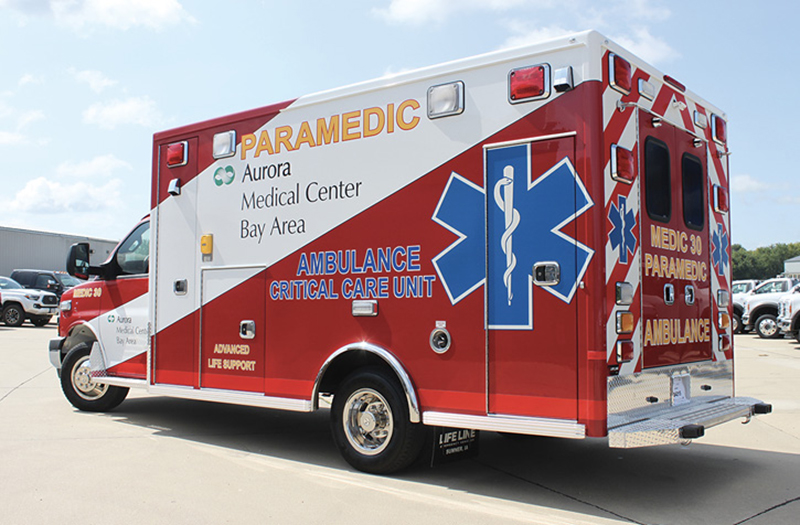
7 Life Line Emergency Vehicles built this Type 3 critical care ambulance on a Ford E-450 chassis for Aurora (WI) Medical Center Bay Area. (Photos 7-8 courtesy of Life Line Emergency Vehicles.)

8 The Mount Horeb (WI) Area Joint Fire Department and Emergency Medical Service had Life Line build it this Type 1 ambulance.
Marshall believes the big migration to Type 1 rigs began after chassis manufacturers stopped offering diesel engines in the cutaway van chassis. “That was the beginning of the switchover,” he says. “Ford dropped the diesel in the Econoline chassis in 2011, and Chevy dropped it from the Duramax six years ago, and I believe those events were big reasons for many fire departments and EMS providers to choose to go with a Type 1 instead of a Type 3.”
Other reasons, Marshall says, are that factory four-wheel drive is not available on Type 3 chassis, and as more fire departments take over EMS functions, they need rigs that can carry more equipment. “A Type 1 ambulance offers a better payload than a Type 3,” he points out. “Fire departments have to carry a lot more stuff on their rigs, like turnout gear, SCBA, and hand tools that an EMS-only agency wouldn’t need to carry. So, the vast majority of fire departments are running Type 1 rigs.”
But, there are departments and EMS agencies that continue to rely on Type 3 ambulances, Marshall notes. “A Type 3 ambulance is more economical to purchase, there’s a lower step-in height, and typically it has better visibility,” he says. “And, you get a little better ride with that chassis, so you don’t have to spend extra for a Liquid Spring rear suspension, which you’re seeing on almost all Type 1 ambulances now.”
Dave Seitsinger, regional sales manager for Life Line Emergency Vehicles, notes, “Eighty percent of Life Line’s builds are Type 1 ambulances, with the balance being Type 3 rigs.” Seitsinger believes that the bigger payload offered by a Type 1 chassis is one of the biggest elements fueling the switch from Type 3 rigs. “With a Type 3, you have a 14,000-pound gross vehicle weight rating (GVWR), but a Type 1 goes from 16,500-pound to 21,000-pound GVWRs,” he notes.
Seitsinger adds that as communities continue to grow, and their fire department or EMS agency runs greater numbers of calls, they need rigs that will hold up to the day-to-day punishment seen with hard EMS use. “The Type 1 chassis is more robust and also is available in four-wheel drive for those departments that need it,” he says. “That’s not available on a Type 3 unless the chassis is sent to a converter to have it added.”
ALAN M. PETRILLO is a Tucson, Arizona-based journalist, the author of three novels and five nonfiction books, and a member of the Fire Apparatus & Emergency Equipment Editorial Advisory Board. He served 22 years with the Verdoy (NY) Fire Department, including in the position of chief.

